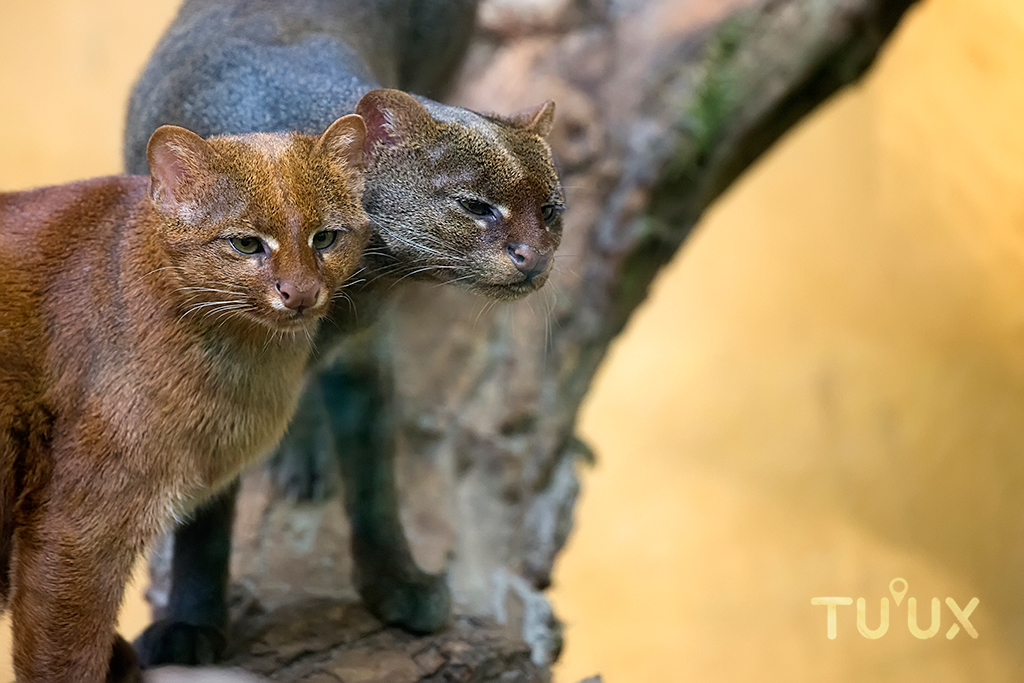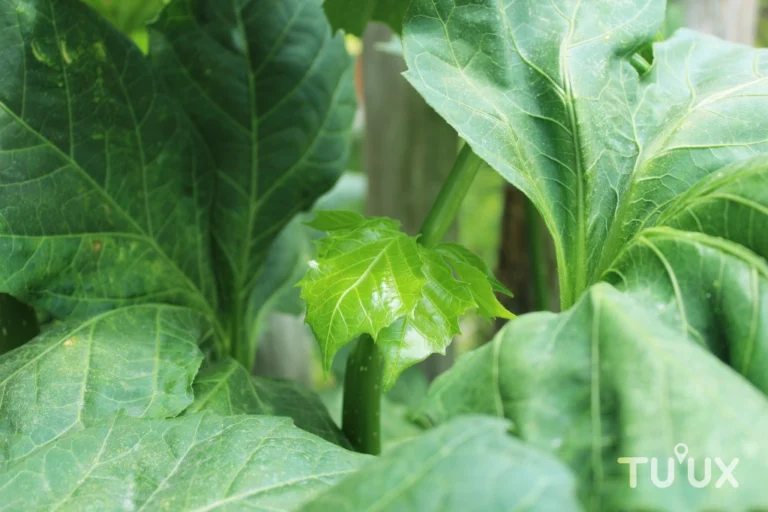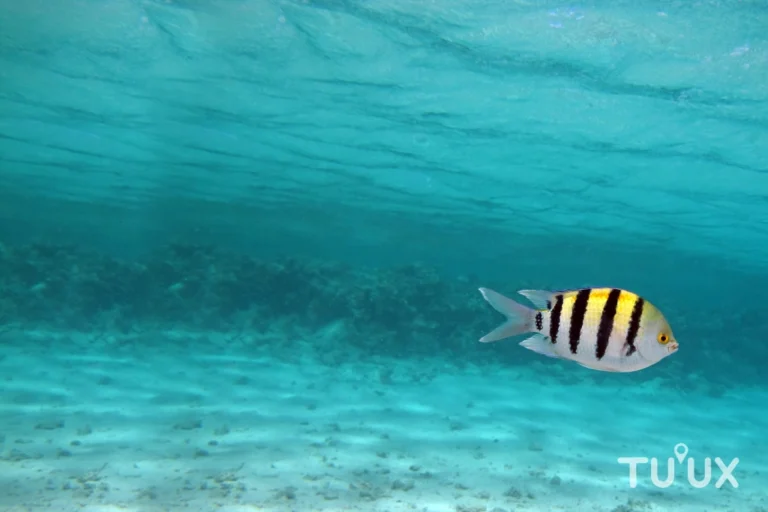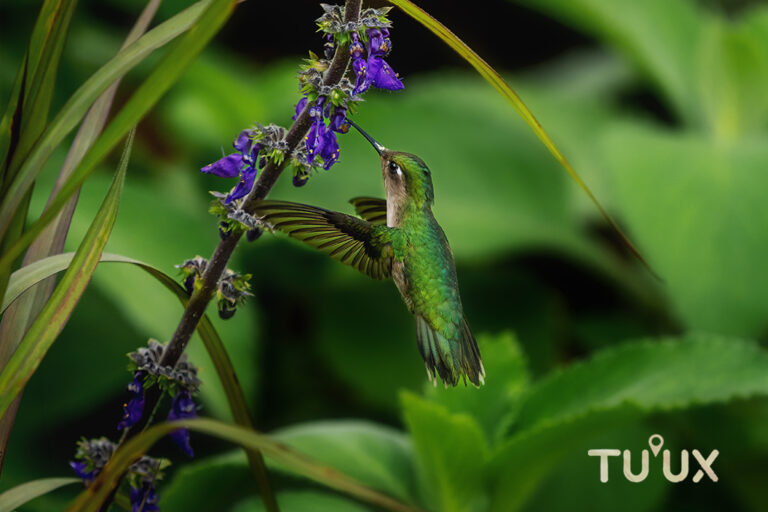JAGUARUNDI
🐾 Un Felino Discreto y Fascinante del Neotrópico
En los rincones más silvestres de América, un pequeño felino se desliza sigiloso entre la maleza, casi sin dejar rastro. Se trata del jaguarundi (Herpailurus yagouaroundi), una especie poco conocida pero de gran importancia ecológica. Desde los matorrales del sur de Texas hasta las selvas del norte argentino, este felino enigmático demuestra su asombrosa adaptabilidad y discreción.
✨ Características Físicas Únicas
El jaguarundi posee una morfología inconfundible que lo diferencia de otros felinos americanos:
- Cuerpo alargado y esbelto: Su forma recuerda más a una nutria o comadreja que a un gato. Este diseño corporal le brinda agilidad para moverse entre la vegetación cerrada.
- Patas cortas y cola larga: Su cola delgada puede representar hasta la mitad del largo total de su cuerpo, siendo clave para su equilibrio.
- Pelaje uniforme y camuflaje eficaz: Los tonos varían entre gris oscuro, marrón, rojizo o incluso negruzco. Estas variaciones responden tanto al entorno como a diferencias individuales.
- Tamaño moderado: Los adultos miden entre 50 y 70 cm (sin contar la cola), con un peso de 3.5 a 9 kg.
- Cabeza aplanada y orejas redondeadas: Adaptaciones que facilitan su desplazamiento silencioso y discreto en entornos densamente vegetados.
🌿 Hábitat y Distribución Geográfica
El jaguarundi es un ejemplo sobresaliente de resiliencia ecológica:
- Amplio rango de hábitats: Se adapta tanto a selvas tropicales como a sabanas, matorrales secos y manglares.
- Preferencias específicas: Busca áreas con cobertura vegetal abundante y acceso a cuerpos de agua, claves para su supervivencia y estrategia de caza.
- Distribución continental: Se extiende desde el sur de EE.UU. (donde su presencia ha disminuido drásticamente) hasta el norte de Argentina.
- Presencia en México: En zonas como Mahahual, Quintana Roo, su avistamiento indica ecosistemas saludables y bien conservados.
🕵️♂️ Comportamiento y Dieta
A pesar de su aspecto dócil, el jaguarundi es un hábil cazador y tiene patrones de comportamiento interesantes:
- Actividad diurna: A diferencia de muchos felinos, es más activo durante el día, especialmente al amanecer y al atardecer.
- Vida solitaria: Prefiere la soledad, salvo en época reproductiva.
- Dieta diversa: Caza pequeños mamíferos, aves, reptiles, anfibios e insectos. Esta dieta generalista lo convierte en un importante controlador biológico.
- Técnica de caza: Se desplaza con agilidad y discreción, acechando a sus presas entre la vegetación baja antes de atacar con precisión.
🐾 Reproducción y Ciclo de Vida
El jaguarundi se reproduce con una notable flexibilidad:
- Reproducción no estacional: Puede reproducirse en cualquier época del año, según las condiciones ambientales.
- Crias ocultas y protegidas: Las hembras paren de uno a cuatro cachorros en madrigueras naturales, como troncos huecos o vegetación espesa.
- Desarrollo: Los cachorros permanecen con la madre durante varios meses, hasta aprender a cazar por sí mismos.
🚨 Estado de Conservación y Amenazas
Aunque su perfil es bajo, el jaguarundi enfrenta múltiples desafíos:
- Pérdida y fragmentación de hábitat: La deforestación, expansión urbana y desarrollo turístico sin control amenazan su supervivencia.
- Caza furtiva y conflictos humanos: Suele ser perseguido por temor o porque se le culpa por atacar aves de corral.
- Retroceso en EE.UU.: Prácticamente extinto en varios estados del sur, como Texas.
- Falta de información: La escasa investigación sobre la especie limita la implementación de planes de conservación eficaces.
🌎 Importancia Ecológica y Necesidad de Protección
El jaguarundi cumple un rol fundamental en los ecosistemas:
- Depredador intermedio: Ayuda a mantener el equilibrio entre especies herbívoras y pequeños animales.
- Especie paraguas: Su conservación beneficia a muchas otras especies que comparten su hábitat.
- Indicador de salud ambiental: Su presencia señala ecosistemas funcionales y bien conservados.
🛡️ Hacia la Conservación del Jaguarundi
Es indispensable implementar acciones concretas:
- Establecer corredores biológicos que conecten fragmentos de hábitat.
- Promover la educación ambiental para reducir el miedo infundado hacia los felinos.
- Fortalecer los programas de monitoreo y estudio de su distribución y comportamiento.
- Involucrar a comunidades locales en proyectos de conservación y turismo sustentable.
🌳 Un Habitante Silencioso que Merece Ser Escuchado
El jaguarundi, con su andar callado y su mirada penetrante, nos recuerda que la riqueza natural no siempre se mide en grandes gestos o criaturas imponentes. Su existencia es una sinfonía de adaptación, discreción y equilibrio ecológico. Protegerlo es proteger los ecosistemas que hacen del continente americano un refugio de vida y diversidad.
¿Te gustaría conocer más sobre la fauna de Mahahual y el Caribe Mexicano? 🐾
Síguenos para descubrir otras especies que habitan estos paraísos naturales.
¿Te gustaría que también lo traduzca al inglés o que genere etiquetas para blog (tags)?
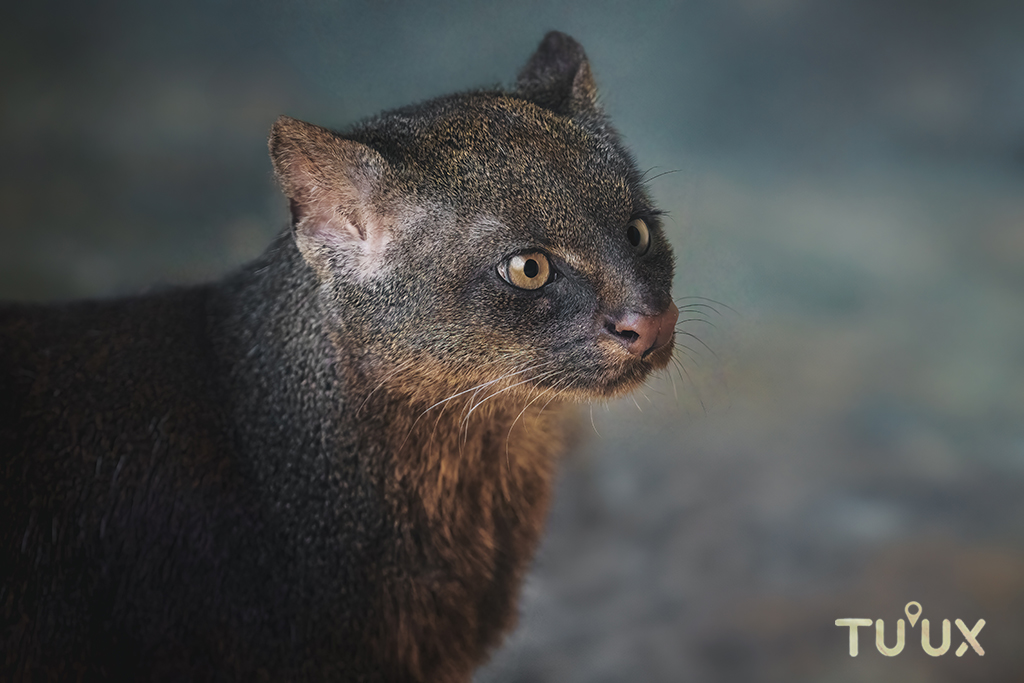
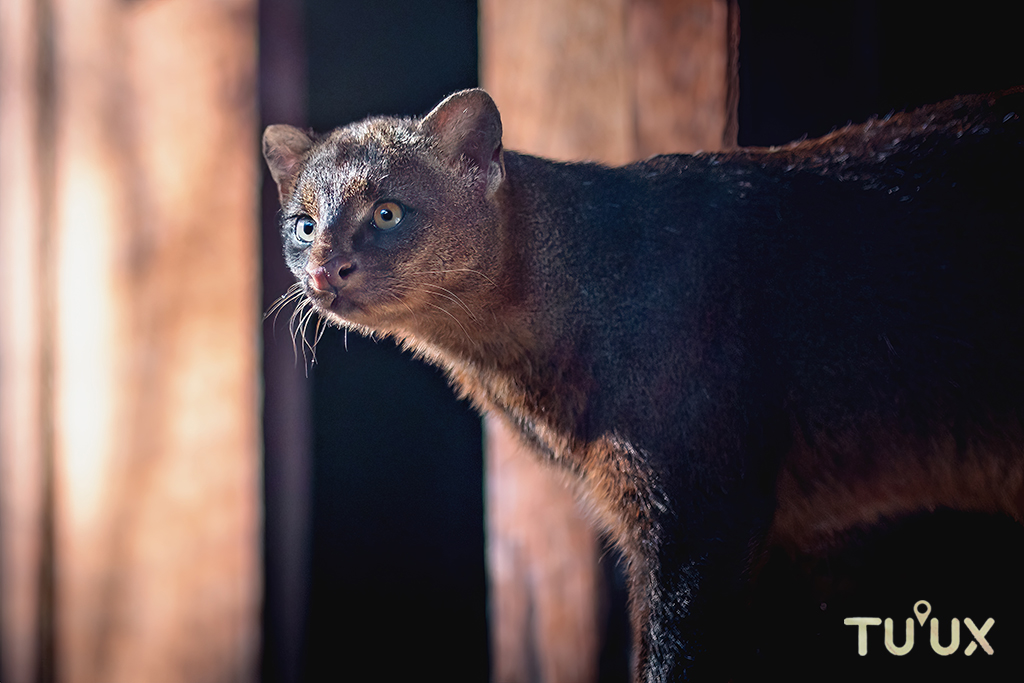
🐾 The Jaguarundi: A Discreet and Fascinating Feline of the Neotropic
In the wild corners of the Americas, a small feline moves silently through the undergrowth, almost without a trace. It is the jaguarundi (Herpailurus yagouaroundi), a little-known but ecologically vital species. From the brushlands of southern Texas to the jungles of northern Argentina, this enigmatic cat demonstrates remarkable adaptability and discretion.
✨ Unique Physical Characteristics
The jaguarundi has a distinctive morphology that sets it apart from other American wild cats:
- Elongated, slender body: More reminiscent of an otter or weasel than a domestic cat. This body design grants it agility through dense vegetation.
- Short legs and long tail: Its thin tail can represent up to half its total length, playing a key role in its balance.
- Uniform coat and effective camouflage: Coat colors range from dark gray and brown to reddish hues. This variation depends on both the environment and individual genetics.
- Moderate size: Adults measure between 50 and 70 cm (excluding the tail), and weigh between 3.5 and 9 kg.
- Flattened head and rounded ears: Adaptations that help it move stealthily through thick vegetation.
🌿 Habitat and Geographic Distribution
The jaguarundi is a prime example of ecological resilience:
- Wide range of habitats: From tropical forests to dry scrublands, grasslands, and mangroves, this feline thrives in diverse ecosystems.
- Preferred environments: Dense vegetation near water sources is ideal for shelter and hunting.
- Continental distribution: It ranges from southern United States (where it’s nearly extirpated) down through Mexico and Central America to northern Argentina.
- Presence in Mexico: In places like Mahahual, Quintana Roo, sightings of the jaguarundi indicate healthy, intact ecosystems.
🕵️♂️ Behavior and Diet
Despite its gentle appearance, the jaguarundi is an efficient hunter with notable behavioral traits:
- Diurnal activity: Unlike many felines, the jaguarundi is primarily active during the day, especially at dawn and dusk.
- Solitary lifestyle: Prefers solitude, except during the breeding season.
- Diverse diet: Feeds on small mammals, birds, reptiles, amphibians, and insects—making it an important controller of prey populations.
- Hunting technique: Moves swiftly and silently through the brush, ambushing prey with precision.
🐾 Reproduction and Life Cycle
Jaguarundis reproduce with notable flexibility:
- Non-seasonal reproduction: Breeding can occur year-round, depending on environmental conditions.
- Sheltered offspring: Females give birth to one to four kittens in hidden, protected spots like tree hollows or dense thickets.
- Development: Kittens stay with the mother for several months until they learn to hunt independently.
🚨 Conservation Status and Threats
Though it keeps a low profile, the jaguarundi faces growing challenges:
- Habitat loss and fragmentation: Deforestation, urban expansion, and uncontrolled tourism development pose serious threats.
- Human conflict and poaching: Sometimes persecuted for allegedly attacking poultry.
- Decline in the U.S.: Nearly extirpated from many southern states like Texas.
- Lack of data: Limited scientific research hinders effective conservation strategies.
🌎 Ecological Importance and the Need for Protection
The jaguarundi plays a key role in ecosystem balance:
- Mid-level predator: Helps regulate populations of smaller animals and prevent ecological imbalances.
- Umbrella species: Protecting the jaguarundi also helps conserve numerous other species in the same habitat.
- Environmental health indicator: Its presence suggests functional and well-preserved ecosystems.
🛡️ Conservation Actions Needed
Protecting the jaguarundi requires concrete action:
- Establish biological corridors to connect fragmented habitats.
- Promote environmental education to reduce fear and misinformation.
- Strengthen monitoring programs to understand its distribution and habits.
- Engage local communities in conservation efforts and sustainable ecotourism.
🌳 A Silent Inhabitant That Deserves to Be Heard
With its quiet steps and piercing gaze, the jaguarundi reminds us that nature’s richness is not always loud or majestic. Its existence is a harmony of adaptation, discretion, and ecological balance. Protecting it means protecting the ecosystems that make the American continent a sanctuary of life and diversity.

